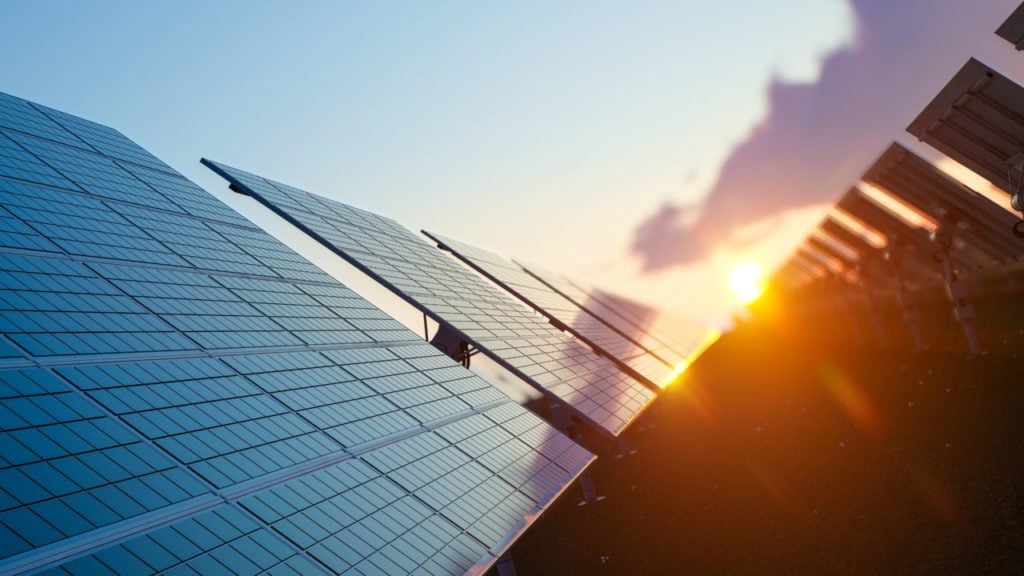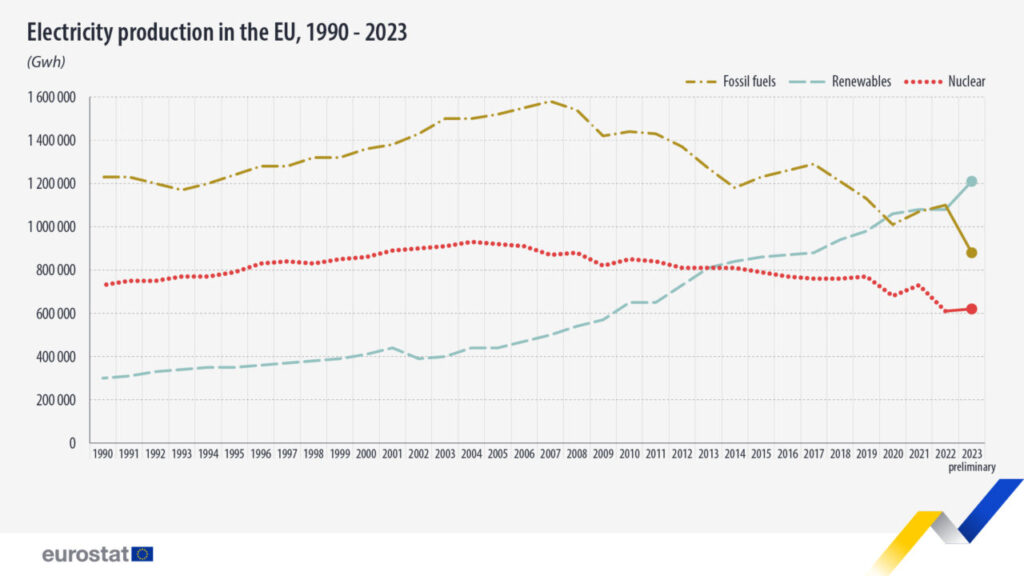
Renewable energy sources provided 44.7% of the EU’s electricity consumption in 2023, according to data from Eurostat, the European Commission’s statistical office.
The data shows that renewable energy sources, including solar PV and wind generation, produced 1.12 million GWh of electricity last year, an increase of 12.4% compared with 2022 statistics.
Try Premium for just $1
- Full premium access for the first month at only $1
- Converts to an annual rate after 30 days unless cancelled
- Cancel anytime during the trial period
Premium Benefits
- Expert industry analysis and interviews
- Digital access to PV Tech Power journal
- Exclusive event discounts
Or get the full Premium subscription right away
Or continue reading this article for free
Simultaneously, the fossil fuel share of electricity production fell by 19.7% from 2022 and reached 32.5% of the EU total (around 0.88 million GWh).

The report did not break down the individual renewable energy generation sources, but a year-end report from PV industry trade body SolarPower Europe (SPE) recorded that the EU installed 56GW of new solar capacity in 2023, the largest addition ever.
Despite this growth, Europe is behind its deployment targets for Net Zero, which necessitates 70GW of solar PV entering operations annually. Growth in 2024 is expected to slow down as inflation impacts uptake in the residential sector and the effects of the energy crisis of 2022 lessen.
SolarPower Europe also published a report showing that Europe’s lack of grid development could hold up the “ambitious” solar deployment plans included in member states’ updated national energy and climate plans (NECP).
EU member states updated the NECPs in 2023, and almost all included an expansion of renewable energy deployment targets. SPE reported that, cumulatively, the new targets amounted to an additional 90GW of possible solar deployments. These are imperilled by the EU’s out-of-date grid infrastructure, SPE said in an April report, which is too static and centralised to deal with a fast increase in more distributed renewable energy resources.
In particular, SPE highlighted a lack of demand-side flexibility and digitalization which “risks putting the cart before the horse” – developing solar capacity without the ability to harness it.






